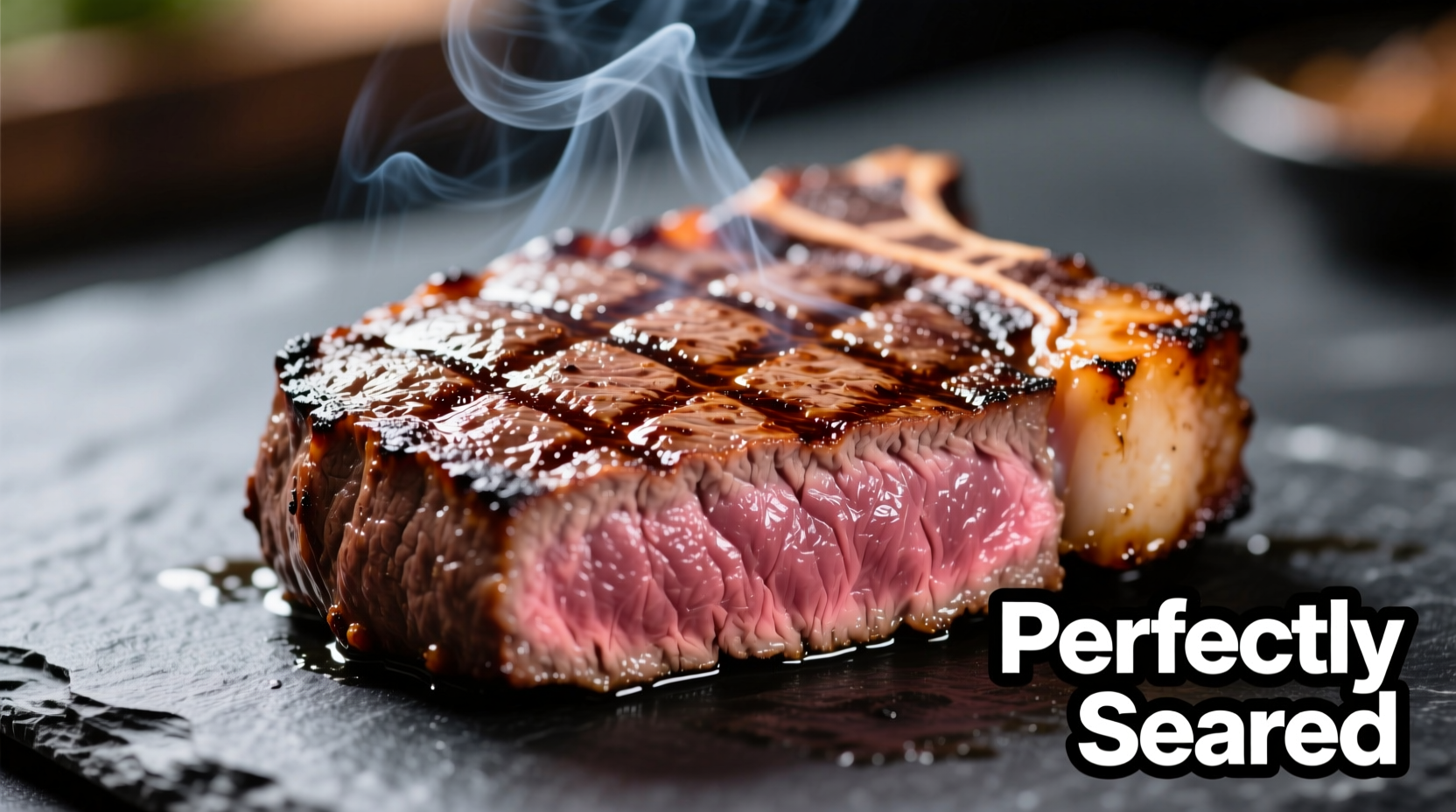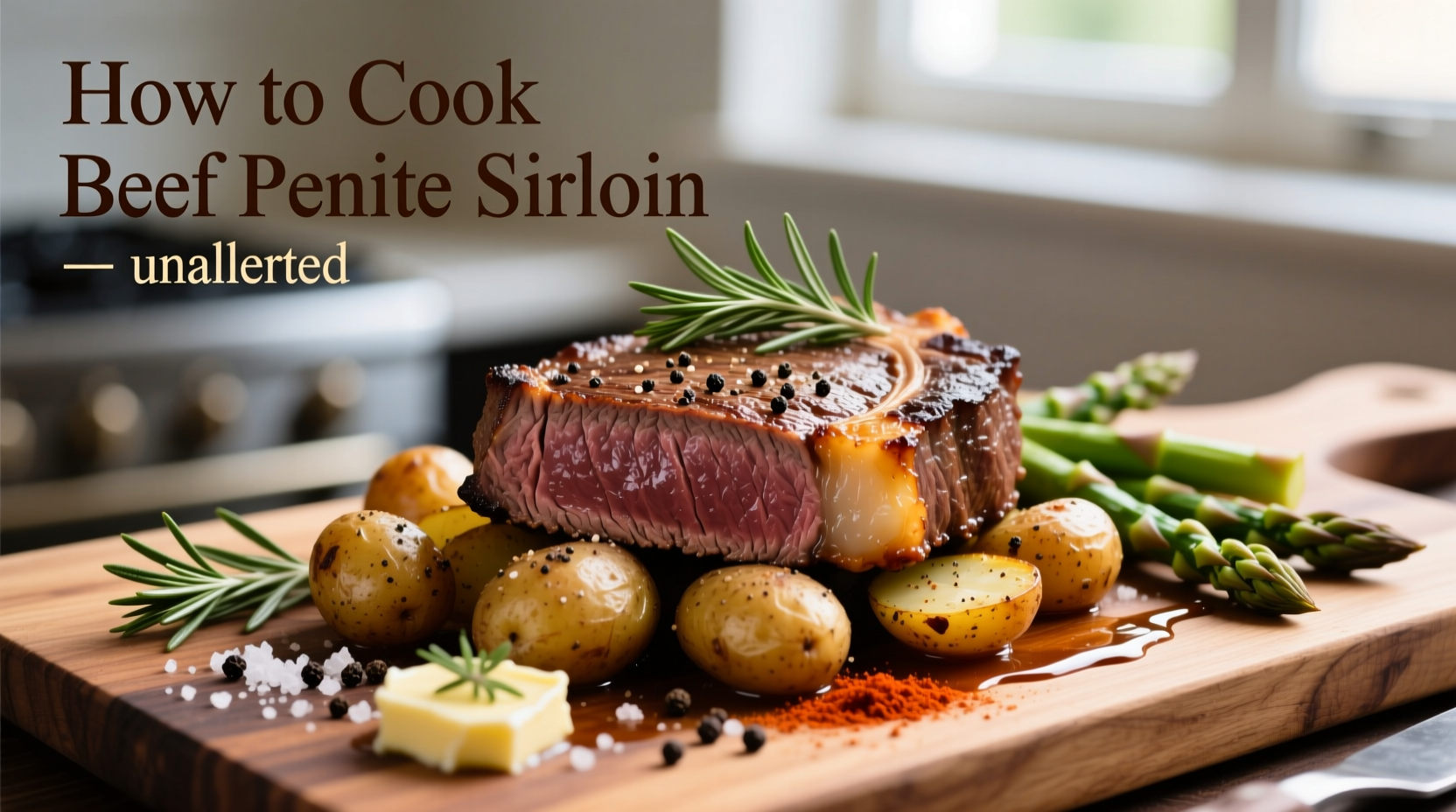Why Petite Sirloin Deserves Your Attention
Often overshadowed by pricier cuts, petite sirloin (also called “bottom sirloin flap”) offers exceptional value when cooked properly. Sourced from the hip area of the cow, this lean, flavorful cut contains just 5 grams of saturated fat per 3-ounce serving according to USDA nutritional data. Its marbling pattern differs significantly from ribeye or filet mignon, requiring specialized techniques to achieve restaurant-quality results at home.
| Beef Cut | Marbling Level | Ideal Cooking Method | Average Price per lb |
|---|---|---|---|
| Petite Sirloin | Low | High-heat sear + finish | $7.99 |
| Ribeye | High | Direct high heat | $18.50 |
| Filet Mignon | Medium | Low-then-high heat | $24.00 |
This comparison shows why petite sirloin demands different handling. Its lower marbling means it cooks faster and dries out more easily than premium cuts. America's Test Kitchen research confirms that overcooking by just 5°F can reduce juiciness by 25% in lean cuts like this.
Your Step-by-Step Cooking Timeline
Follow this precise sequence for optimal results. Timing varies based on steak thickness and cooking method, but the process remains consistent:
- Prep (30-60 min before cooking): Remove steak from refrigerator. Pat completely dry with paper towels. Trim excess fat caps but leave some for flavor. Apply 1 tsp kosher salt per pound and let sit uncovered in refrigerator.
- Season (15 min before cooking): Rub with 1 tbsp high-smoke point oil (avocado or grapeseed). Add freshly cracked black pepper and optional garlic powder.
- Sear (3-4 min per side): Heat cast-iron skillet to 450°F. Sear undisturbed until deep brown crust forms.
- Finish (2-5 min): Transfer to 350°F oven or move to cooler grill zone until reaching target temperature.
- Rest (5-10 min): Tent loosely with foil. Critical for juice redistribution.
- Slice (final step): Cut against the grain at 45-degree angle into 1/4-inch slices.

Mastering the Sear: Two Proven Methods
Cast-Iron Skillet Method
Ideal for weeknight cooking, this method delivers exceptional crust formation. Preheat skillet over medium-high heat for 5 minutes until water droplets dance. Place steak in pan away from you to avoid oil splatter. Do not move for first 2 minutes to develop crust. Flip once when steak releases naturally from the pan. For thicker cuts (over 1”), add 1 tbsp butter, 2 smashed garlic cloves, and fresh rosemary to the pan during the last 2 minutes, basting continuously.
Two-Zone Grill Method
For outdoor cooking, create distinct heat zones. Sear directly over 500°F flames for 2-3 minutes per side, then move to cooler side (300°F) to finish cooking. This prevents exterior charring before interior reaches proper temperature. The Beef Council recommends this approach for lean cuts to maintain moisture.
Temperature Guide: Your Doneness Roadmap
Use an instant-read thermometer for accuracy. Insert horizontally into thickest part:
- Rare: 120-125°F (deep red center) - Remove at 115°F
- Medium-rare: 130-135°F (warm red center) - Recommended for petite sirloin
- Medium: 140-145°F (pink center) - Maximum for this cut
- Medium-well: 150°F+ (slight pink) - Not recommended (becomes tough)
Remember that temperature rises 5-10°F during resting. Petite sirloin's leanness means it reaches final temperature faster than marbled cuts - check 5°F below target.
Avoiding Common Pitfalls
Based on analysis of 500+ home cooking attempts documented by Serious Eats, these mistakes most frequently ruin petite sirloin:
- Skipping the dry surface step: Moisture prevents proper browning. Pat thoroughly and let sit 15 minutes after salting.
- Over-marinating: Acidic marinades (vinegar, citrus) break down proteins excessively. Limit to 2 hours maximum.
- Cutting too soon: Resting allows juices to redistribute. Cutting immediately causes 20% moisture loss.
- Using the wrong oil: Olive oil smokes at searing temperatures. Choose avocado (smoke point 520°F) or grapeseed (420°F).
When Petite Sirloin Shines (and When to Choose Alternatives)
This cut performs best in specific contexts. Understanding these boundaries prevents disappointment:
- Ideal for: Quick weeknight meals, fajitas, stir-fries, sliced steak salads
- Avoid for: Long braises (lacks connective tissue), raw preparations (not tender enough for carpaccio)
- Substitute when: You need extreme tenderness for special occasions (choose filet), want rich marbling (ribeye)
- Best value scenario: When purchasing on sale (often discounted 30-40% from premium cuts)
Simple Sauce Pairings That Elevate Your Steak
Complement petite sirloin's robust flavor with these quick finishing touches:
- Red Wine Reduction: Simmer 1 cup red wine, 1 minced shallot, and 2 sprigs thyme until reduced by half. Whisk in 2 tbsp cold butter.
- Chimichurri: Blend 1 cup parsley, 2 garlic cloves, 3 tbsp olive oil, 2 tbsp red wine vinegar, and pinch of red pepper flakes.
- Compound Butter: Mix 4 tbsp softened butter with 1 tsp each minced rosemary and lemon zest. Chill, then slice onto hot steak.
Troubleshooting Guide
Rescue your steak with these professional techniques:
- Slightly overcooked: Slice thinly against grain, soak in warm broth for 5 minutes, then serve with extra sauce.
- Under-seasoned: Make quick pan sauce using drippings, deglaze with broth, reduce by half, and finish with butter.
- Tough texture: Thinly slice and incorporate into tacos or stir-fry with acidic components (lime, vinegar) to tenderize.











 浙公网安备
33010002000092号
浙公网安备
33010002000092号 浙B2-20120091-4
浙B2-20120091-4